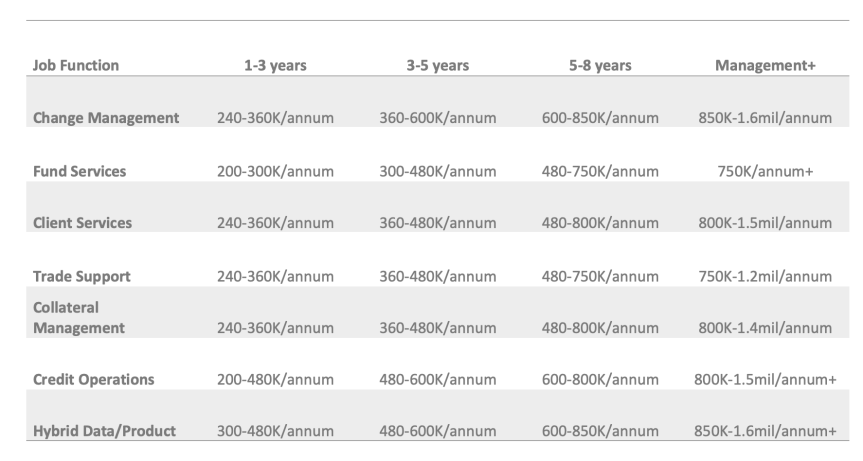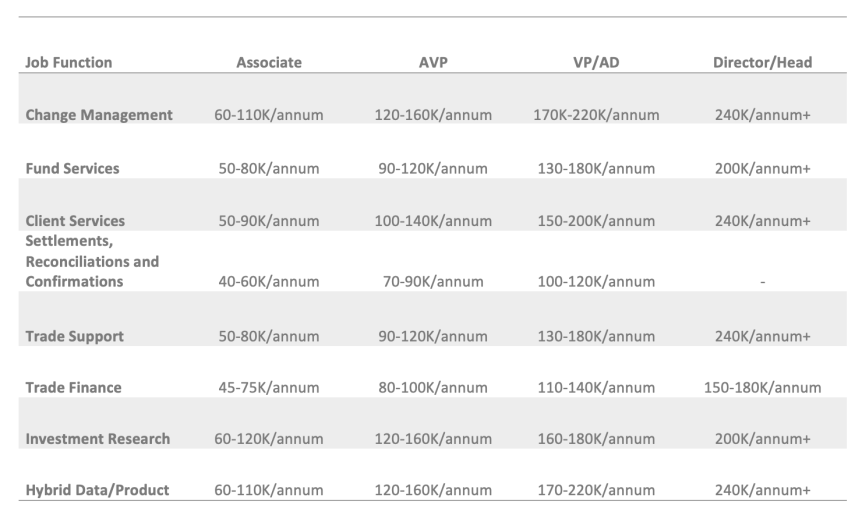Operations has traditionally been a stepping stone for fresh analysts looking to gain product and hands-on experience within financial services.
However, operational roles are also cost centers at the end of the day. This means that these functions are at risk of being outsourced to lower cost countries or if possible, automated.
The best example is the traditional operations function – Settlements, Reconciliations and Confirmations.
A few years back, these were separate functions with teams of 5-10pax per function per product. But if you look at the actual work duties, you find that they are highly manual and they do not add any value to the business.
The first step is to move them to lower cost centers. Hong Kong and Singapore made great headwinds over a decade ago when America, UK and Australia outsourced the functions there as labor was cheaper and the quality was not compromised.
But as these cities become more expensive, companies will again pivot towards outsourcing or automation. In the last 4 years, we have seen a major shift towards moving these functions to shared service centers in Kuala Lumpur, Manila, Bangalore and Pune. And this will just continue.
So what can you do to ensure you remain competitive in the job market?
Move to a smaller set-up
Operations in small set-ups are usually run by a team of 1-3pax. Private Equity, Hedge Funds and Asset Management firms are a great option. The operations function is usually too small to outsource out and automation is not required yet. Keep in mind competition is fierce and you would need to have hands-on experience in all functions within the trade lifecycle. You may need to compromise on salary in order to have stability.
Learn a technical skill
For those who are more introverted and are more mathematical/logical, try to take online courses in coding. The most in-demand language being Python and VBA. We are seeing a growing trend towards data analytics within the operations function and a popular requirement is proficiency in Python and VBA.
*Note, this is strictly for Operations, not IT.
Beginner courses are generally free online – check out udemy and codecademy.
Improve a soft skill
Not everyone is meant to code and for those that have zero interest in it, there are other ways to remain competitive.
The human element is still preferred by clients and financial institutions are always looking to improve their customer service levels in order to remain competitive.
By using your existing product and process knowledge and build that with communication and stakeholder management skills, you can carve a niche for yourself either within client services or change management (again operations, not IT). I will expand on this at a later post.
To build on soft skills – try joining Toastmasters to improve your public speaking and communication skills. It also helps build confidence and being an international club, it’s a great place to network.
The key takeaway is, you have to invest in yourself because in today’s market, situations are always changing and the small amount of time you dedicate to improving yourself pays off in the long run.
Note that I have not mentioned anything about CFA, MBA and other designations. For many, these are not the best options that would benefit them unless they have a clear career path in mind and the designations are a must-have requirement to get there.


